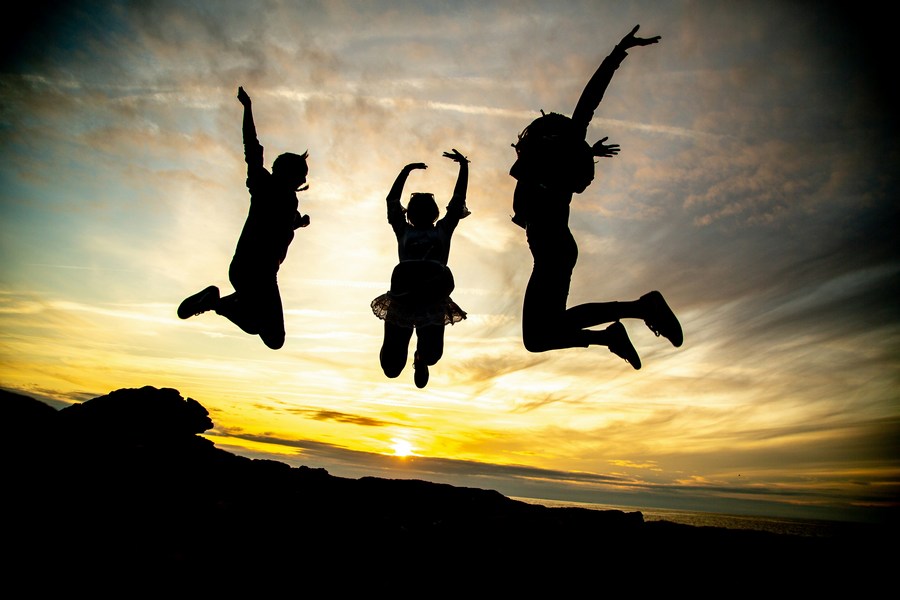Why Play Equals Happy

Enjoying some playtime is like being on a fast track to happiness. By “playtime” I mean an activity where I’m not noticing the clock – a break from planning, ruminating and conscious doing. During this time, I allow myself to let go and be in the moment. It is a state of mind where creativity happens and when I feel most free to be myself.
In my art classes I convey this state of mind through “gesture drawing”. Gesture drawing is kind of like scribbling, only more. I ask students to purposely not worry about trying to make their drawing look like something but instead, to capture the movement, energy or essence of their subject matter. We put down our pencils and use the side of a conte crayons to get down information quickly. It’s like drawing from the shoulder down, your head unattached.
Once students grasp it, I find they really enjoy this type of drawing. They find it freeing and their drawings often turn out better than they thought they would (even though that wasn’t the goal). Unless there is a live model, we do gestures from National Geographic magazines. A thirty second charcoal scribble might – even unintentionally – capture the graceful movement of a fish under water, or an angry stare from someone’s eyes. To get people to do gestures, I get them to “draw faster than they have a chance to think about it” and if they start thinking too much, to “draw faster”.
In gesture drawing I want people to practise letting go, trust their instincts and connect with feeling. Afterall, in a left-brain language-oriented world, we often don’t use the other more intuitive half of our brain. Sometimes, like with a blind contour drawing (another exercise where you don’t worry about the outcome), people will ask, “what is the point of doing this”? My answer is, “so that you will be able to capture the feeling of gesture in all of your work”.
I feel this sense of play when I go mountain biking or snow boarding, things that take enough skill to keep my mind occupied but also feel fun at the same time. Time tends to pass quickly. Others might get this feeling playing pool, collecting rocks on the beach or strumming guitar. Ideally, the playful activity takes some degree of skill but there’s no self-criticism involved – you’re not trying to accomplish anything.
Learning to play, takes practise. It often takes students a few times to get comfortable doing gesture drawing and for their drawings to feel more spontaneous. It takes practise to form a connection to and to be familiar with this state of being in other activities as well.
Even though it sounds ironic, I actually schedule playtime. I work my regular life around these activities, make it a priority. Sometimes other stuff doesn’t get done and I must live with a few more weeds or have a quick dinner. But in the end, if make time for something fun (at least weekly), I have more energy, feel more confident and enjoy the rest of my life a lot more. Having “play” in my life is like the dressing on the salad, the attractive scent in the flower or the colour in a sunset. Life is bland without it, and it gives you a feeling you can’t describe.
Everyone may have a different activity that gives them this sense of fun. Don’t underestimate its power or importance in making you feel good. See how play infiltrates your being and makes you better at the rest of life. Live believing life isn’t a dreary routine.
Stepping out of a normal routine, finding novelty, being open to serendipity, enjoying the unexpected, embracing a little risk, and finding pleasure in the heightened vividness of life. These are all qualities of a state of play.
― Stuart Brown, Play: How It Shapes the Brain, Opens the Imagination, and Invigorates the Soul
Photo above: Alex Guillaume (Unsplash)

